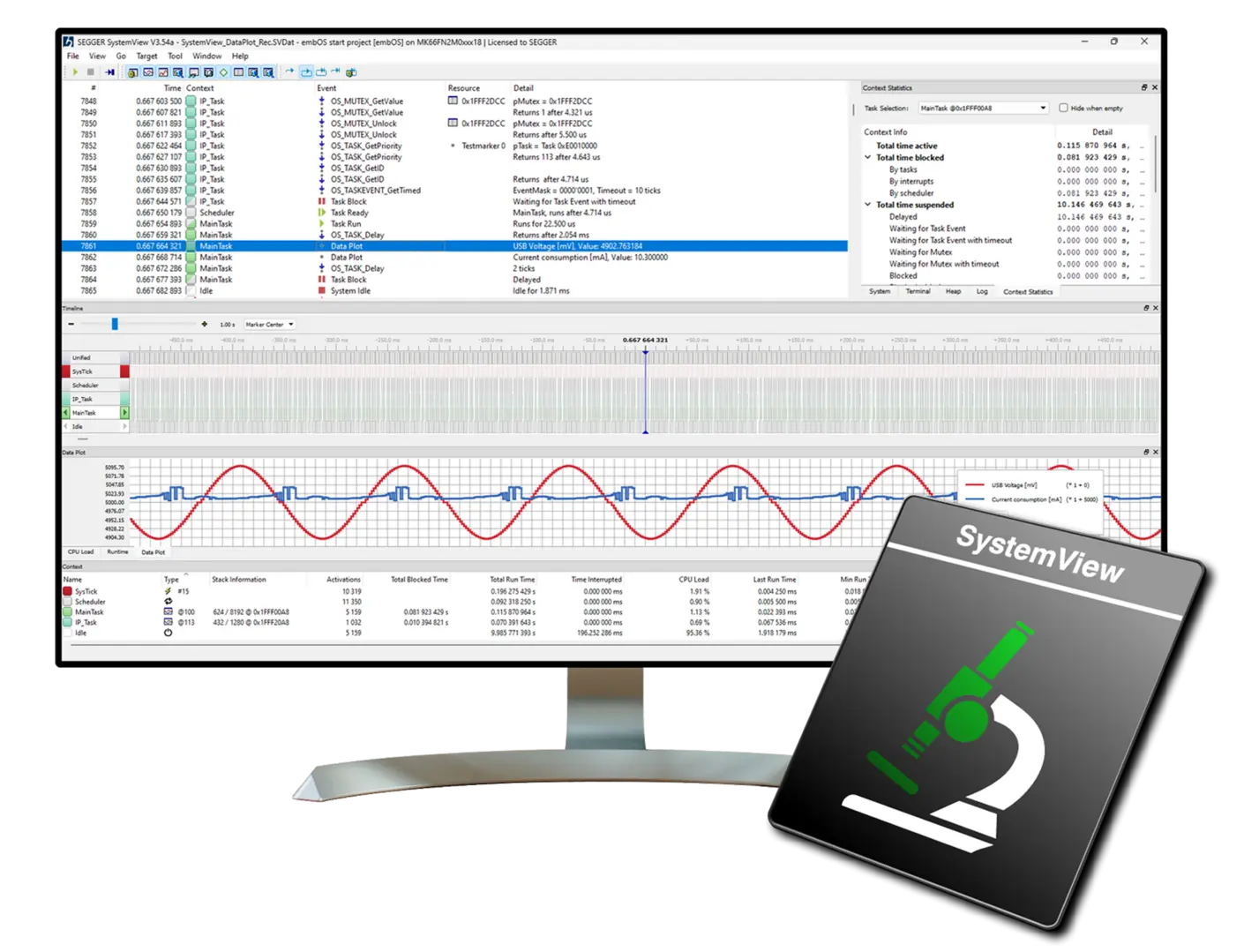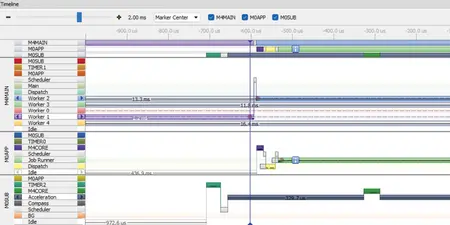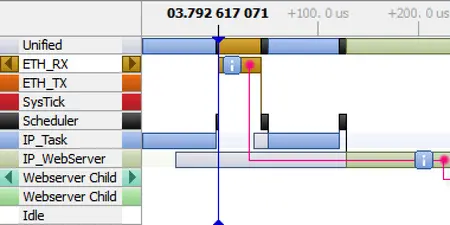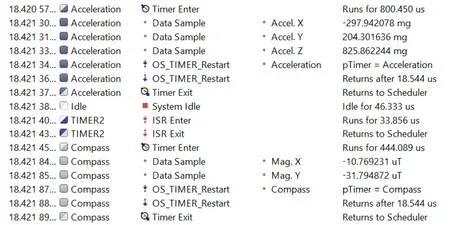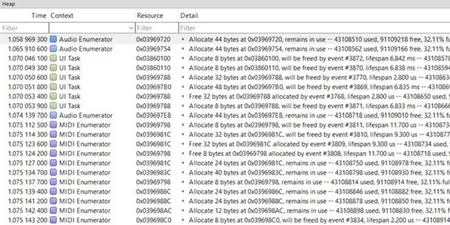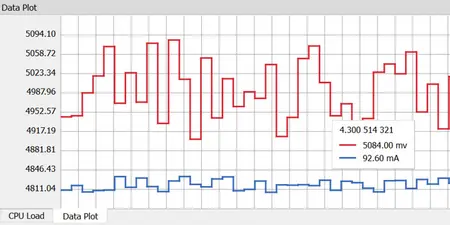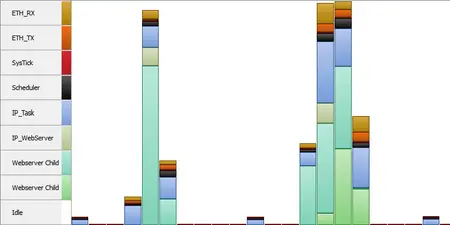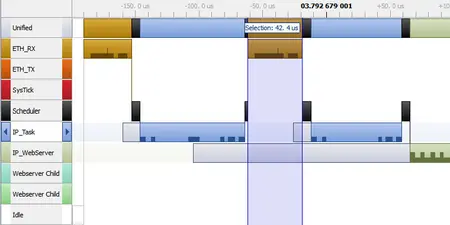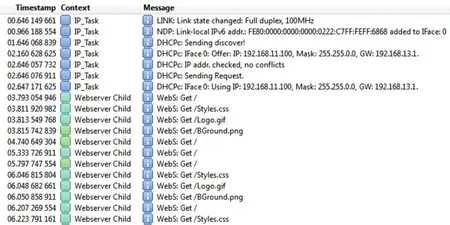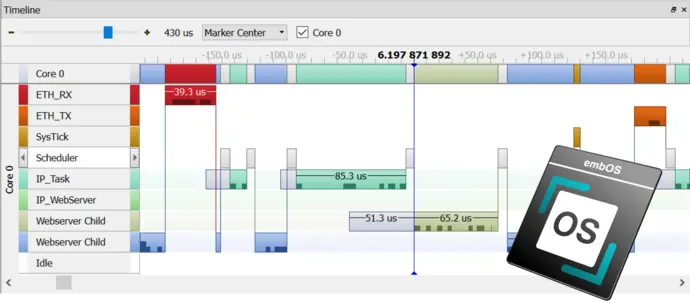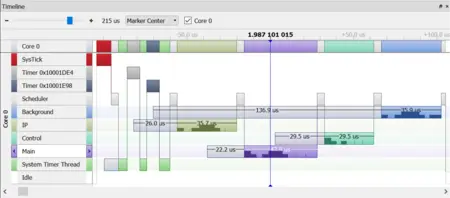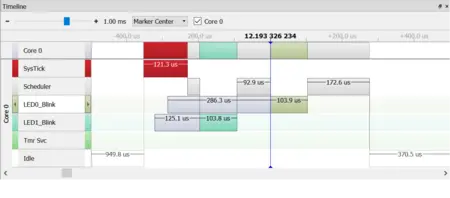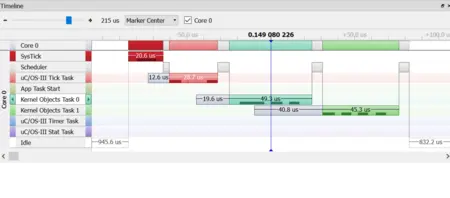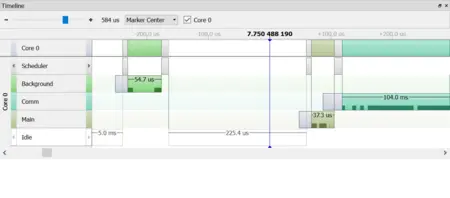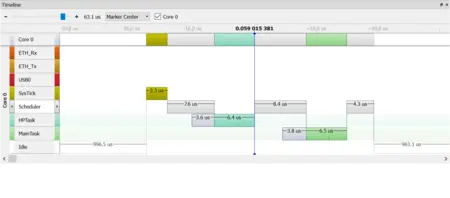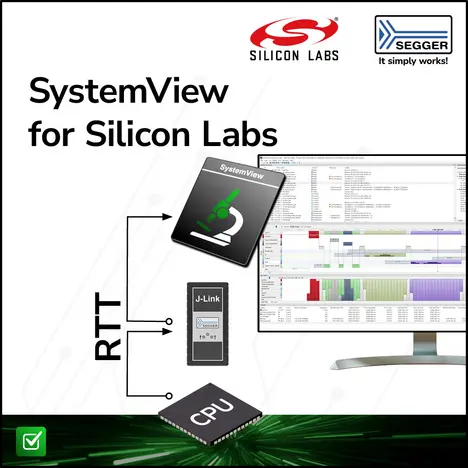
Overview
SystemView is an embedded-testing tool designed to analyze and profile the behavior of real-time systems. It offers deep insights into runtime behavior, surpassing the capabilities of traditional debuggers. Ideal for complex systems with multiple threads and interrupts, SystemView helps embedded software developers ensure their systems perform as intended, identify inefficiencies, and uncover unintended interactions or resource conflicts. By recording monitor data from the embedded system via the debug interface, SystemView visualizes tasks, interrupts, and software timer execution in detail, documenting their frequency, order, and execution time. The recording can be saved to a file for analysis at a later time or for documentation of the system.
Key features
SystemView provides powerful features and is minimally intrusive, which makes it an essential tool for embedded-system development. It works with any CPU, RTOS, or bare-metal system, ensuring high flexibility and adaptability for a variety of different setups. Due to its compatibility, developers can use SystemView across a wide range of embedded software projects.
Multicore support
SystemView enables seamless recording and analysis for embedded systems with multiple CPU cores on a single microcontroller, allowing users to gain synchronized insights into interactions. It supports diverse architectures and provides a unified and detailed view of even the most complex systems.
Continuous recording
SystemView captures tasks, interrupts, timers, resources, API calls, and user events in real time. This means embedded developers can fully analyze a system's runtime behavior with minimal intrusion.
More about continuous recording...
Use cases
SEGGER's SystemView provides deep insights into embedded-system operation. It supports a wide range of applications, from verifying system behavior, to optimizing performance, to analyzing complex interactions in multithreaded environments. Its versatility makes it a valuable tool for understanding and improving embedded software systems.
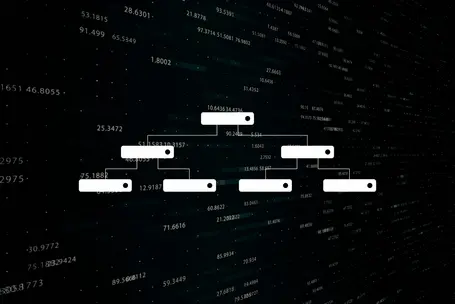
Analyze complex embedded systems with multiple threads and events
For complex systems with multiple threads, interrupts, and events, SystemView delivers a deeper level of insight than traditional debugging tools. By capturing and analyzing interactions across all embedded system components, it reveals intricate relationships and potential conflicts that may not be visible through conventional methods.
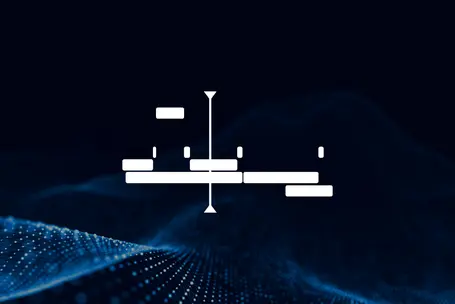
Verify embedded system behavior
SystemView enables precise verification of system behavior by providing real-time visualization of task execution, interrupts, and API calls. By capturing a detailed timeline of events, it becomes easier to ensure that all parts of the system are functioning as designed. This helps in identifying irregularities or unexpected behavior early in the embedded software development process, leading to more reliable and robust systems.
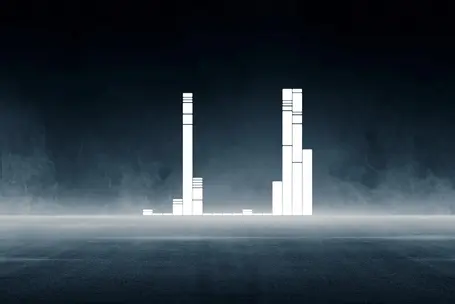
Optimize resources and performance
With its detailed timing analysis, SystemView enables in-depth evaluation of resource usage and performance. It highlights inefficiencies, such as excessive CPU load or poorly distributed task execution, and provides actionable insights to optimize embedded system performance. By fine-tuning task scheduling, memory allocation, and runtime behavior, developers can achieve significant improvements in overall efficiency and responsiveness.
How SystemView works
SystemView operates by integrating a small software module, containing SystemView and RTT, into the target system. The instrumentation code is available at: https://github.com/SEGGERMicro/SystemView. This module collects event data, formats it, and passes it to the RTT module. The RTT module stores the data in the target buffer, which enables continuous recording with a J-Link on supported systems, as well as single-shot and post-mortem mode recording on any system. Events such as interrupt start and end are monitored and stored with high-accuracy timestamps, configurable down to a single CPU cycle (5 ns on a 200 MHz CPU).
The SystemView module is efficient, requiring less than 2 KB of ROM and about 600 bytes of RAM for continuous recording using J-Link. It imposes minimal overhead—less than 1% on a system with 10,000 events per second on a 200 MHz Cortex-M4. Data is transferred via the debug interface, requiring no additional hardware or pins. The tool can be used on any system that offers debug access.
Adding SystemView to a target embedded system is straightforward. Only a small set of files needs to be included in the project, and depending on the system, as little as one function call or two lines of code per interrupt are needed. This simple setup can typically be completed within minutes, enabling efficient and precise event monitoring.
More information on how SystemView works is available in the SystemView user manual.
Additional features
Heap monitoring
Tracks memory allocations in real time, helping developers identify inefficiencies and memory leaks. By highlighting peak usage and pinpointing allocation sources, it provides actionable insights to resolve issues and optimize resource management.
DataPlot window
Visualize variables, sensor data, and custom metrics in real time alongside recorded events. This synchronized, scope-like view provides deep insights into embedded system behavior for precise debugging and optimization.
Event timeline window
RTOS support
SystemView can be used out-of-the-box with RTOSs such as embOS, uC/OS-III, Micrium OS Kernel, FreeRTOS, NuttX, Zephyr, and ThreadX or even without any OS to record interrupt activity and user events.
embOS
SystemView support has been included in embOS since version 4.12a. It allows for the display and recording of application and operating-system execution. Any embOS library mode that includes the embOS trace API has SystemView support enabled by default. Additionally, embOS source code projects can be individually configured to enable SystemView support.
ThreadX
Eclipse ThreadX (formerly Azure RTOS) has been instrumented for use with SystemView since version 6.4.
FreeRTOS
SystemView can be used with versions V8, V9, V10, and V11. It is natively supported since FreeRTOS V11.
uC/OS
Micrium OS Kernel
SystemView can be used with Micrium OS Kernel since its first version.
Zephyr
NuttX
System requirements
| Supported OS | |
|---|---|
| Windows | Microsoft Windows (x64/Arm) |
| macOS | macOS (x64/Apple Silicon) |
| Linux | Linux (x64/Arm) |
| Development system | |
|---|---|
| CPU | 2GHz |
| Memory | 4GB RAM |
| Disk space | 2GB |
Licensing
SystemView is available as a SEGGER Software Tool under SEGGER's Friendly License for non-commercial use and SEGGER's Commercial-use License. Licenses for SystemView are perpetual, enabling you to use the tool indefinitely without requiring an annual subscription.
Silicon vendor buyouts
SEGGER offers the option to license SystemView for redistribution to company customers on a company's own terms. A free commercial license may be used to develop applications for certain devices from a silicon vendor. Free licenses can be activated easily through the license-request dialog.
Latest news
Get in touch with us
Have questions or need assistance? Our Embedded Experts are here to help!
Reach out to us for:
- Licensing quotes
- Technical inquiries
- Project support
